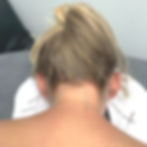As a PT I use dry needling and cupping as part of my hands on treatment. Interestingly enough, I often have patients come in that say things like “Cups! I did that at my chiropractor,” or “I do acupuncture all the time, I’m good with dry needling.”
Upon me asking these patients what they had these treatments for, they don’t always have the clearest explanation. My hope with my patients as they go into any medical providers office (including mine) is that they have a basic understanding of what their treatment is actually doing for them before and following their treatment.
The idea of this post is to shed light on how and why we utilize each of these treatments as well as safety considerations and possible side effects.
Cupping
To fully understand cupping, it’s essential to get an idea of the tissue it affects. Cupping pulls up the skin which leads to a stretching of the fascia. Fascia is cobweb-like connective tissue between the muscle and skin. Small nerve branches and blood vessels are interwoven throughout this tissue. The picture below is a good visualization of fascia.

With swelling and inflammation, the nerves within this layer become really sensitive. Also with chronic inflammation, those cobwebby like connective tissues can stiffen up and restrict movement of the nerves, muscle, and possibly restrict blood flow in these tiny micro vessels. Cupping or myofascial decompression stretches these tissues out, brings blood flow to that area, and helps make those nerves a little less sensitive. The net effect is pain relief and improved mobility.
The major side effects of this treatment are possible bruising and temporary soreness or numbness following the treatment. This usually wears off within a couple days. The bruising is not indicative of harm and also is not required to benefit from the treatment.
Dry Needling


Dry needling involves placing a monofilament needle into a trigger point or sore spot (similar to knot) within a muscle. The trigger point or sore spot in the muscle means there’s some kind of inflammation within the muscle. The effect of the needle going into that spot leads to reduced tension and pain as well as improved range of motion in some cases.
There are no injections with dry needling. Side effects include soreness for a couple days that usually leads to pain relief. All therapists that do dry needling have gone through a 60 hour certification that goes into detail on safe handling and placement of needles to avoid harm to the patient.
For additional information on dry needling, check out this link where you can find a little more in depth information on dry needling and how to schedule a visit with Functionize.
Which one should I get?
A therapist uses an initial evaluation to determine which intervention to use. Depending on the nature of one’s injury or pain and how long one has been experiencing that pain will affect which treatment is best for you. Inflammation in the soft tissue (whether that’s the muscle or the fascia) can occur from straining the muscle, immobility, nerve injury, and other chronic conditions.
Oftentimes the muscles and surrounding fascia around an injured joint are very sensitive and painful. These treatments can work as part of a treatment plan for an injured joint.
At Functionize, we don’t do either of these treatments just to do them. Cupping or dry needling work best if the patient’s injury or symptoms involve irritation in the muscles and fascia. This goes back to the importance of a good evaluation that helps determine the nature of the injury itself and exactly what treatment you need to improve.
Needling and cupping are great options for reducing pain, stiffness, and/or irritation in the soft tissues. They are even better when paired with consistent exercise as well as mobility and strength exercises to retrain muscles, stretch out any tissues that are tight, and keep circulation to those tissues with consistent movement.
I have an injury, how do I get this?
Give us a call and we will set you up with an evaluation. Since we are out of network, any treatment we offer (including dry needling and cupping) is included in the price of the visit. This means that you will never get a surprise bill several weeks or months following treatment. Our goal is to get people functioning and performing at their highest level and we love guiding someone from a place of injury to a place of performance!
Thanks for reading!
Tyler Balfour PT, DPT
Tyler and his family currently live in Decatur where he enjoys rock climbing, cycling, running, golf, and playing yard games in his free time. Being outside and moving energizes him and he seeks to use the highest quality of care to help his patients overcome physical impairments so they too can get outside and move.
